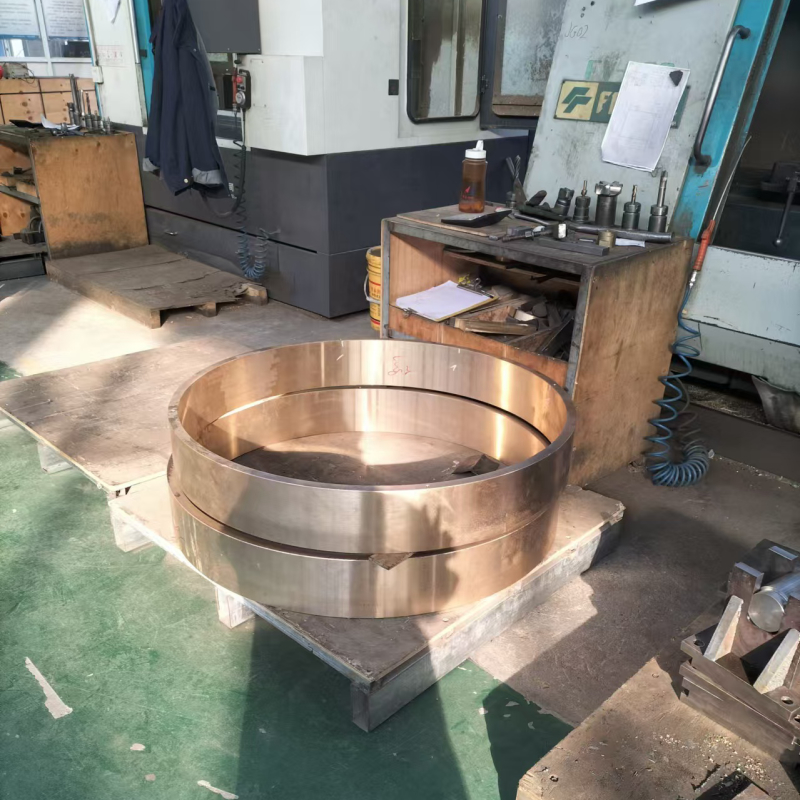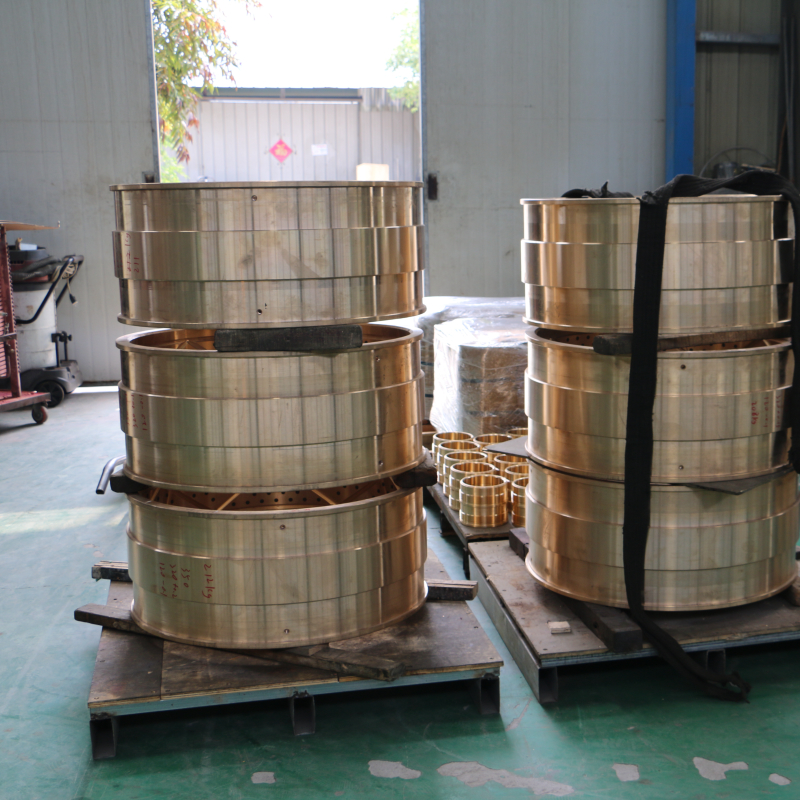 Mazhuang Village, Yuhe Town, Huixian City, Xinxiang City, Henan Province, China
Mazhuang Village, Yuhe Town, Huixian City, Xinxiang City, Henan Province, China
 Service Hotline +86 17630258963
Service Hotline +86 17630258963  Cell phone +86 17630258963
Cell phone +86 17630258963 Equipment shutdown and isolation
As soon as burn type destruction of the copper bushings is detected, equipment operation should be stopped to prevent further damage. At the same time, disconnect the equipment from the power source (if it is electric) or power source to avoid accidental startup.
If the equipment is part of a production line, isolate the equipment from other associated equipment to prevent the problem from spreading. For example, in an automated production line, suspend the work cell where the damaged equipment is located through the control program and place warning signs to inform other operators that the equipment is in a faulty condition.
Cooling
Since burn type destruction is accompanied by high temperatures, the copper bushing needs to be cooled. However, care should be taken to avoid rapid cooling methods, such as direct flushing with large quantities of cold water, as this may cause cracks in the copper sleeve due to thermal stress.
A more suitable method is natural cooling or the use of air cooling. You can use a fan and other tools to blow on the copper bushing and its surrounding equipment to cool down, so that the temperature of the copper bushing is gradually reduced to a safe range. During the cooling process, an infrared thermometer can be used to monitor temperature changes to ensure that the temperature drops at a reasonable rate.

Check the degree of damage
After the cooling of the copper bushing, carry out a preliminary inspection of the degree of damage. Observe the range and depth of burns on the surface of the copper bushing and whether there is material flaking. If the burns are light, showing only surface discoloration and slight hardness changes, there may still be the possibility of repair; if the burns are serious, such as the appearance of large areas of melting, obvious cracks or serious deformation, it may be necessary to replace the copper bushing.
At the same time, check whether components such as shafts, which are mated with the copper bushings, have also been damaged. Shafts may show reduced hardness, surface wear or deformation due to high temperatures and need to be evaluated together.
Lubrication system inspection and repair (if possible)
Check if there is a fault in the lubrication system that is causing burns on the copper bushings. Check to see if the lubricant oil is sufficient and if the oil quality is contaminated. If the lubricating oil is insufficient, replenish the lubricating oil that meets the requirements.
Check whether the lubrication pipeline is blocked, whether the oil pump is working properly, etc. If any problem is found in the lubrication system, it should be repaired as far as possible, such as clearing blocked oil pipes, replacing damaged oil pump parts, etc., to ensure that the lubrication system can work normally in the subsequent emergency treatment or repair process.
Simple repair measures (for mild burns)
For mildly burned copper bushing, if there are some rough sintered particles on the surface, you can try to use tools such as fine sandpaper or abrasive paste to polish the surface of the copper bushing to remove these particles and restore the surface finish.
After grinding, you can apply some high-performance grease on the surface of the copper bushing in an appropriate amount to temporarily improve its lubricating properties. However, it should be noted that this repair method is only an emergency measure, not a substitute for complete repair or replacement.

Temporary spare parts replacement (if available)
If there are spare copper bushings and corresponding tools, and the site has the replacement conditions, you can consider temporary spare parts replacement. During the replacement process, operate in strict accordance with the installation requirements of the equipment to ensure that the new copper bushing is installed correctly and fits well with the shaft and other components.
After replacement, the equipment should be simple debugging, such as manually rotating the shaft, check whether there is a stagnant phenomenon, and start the equipment for a short period of no-load operation, to observe the operating state of the equipment, such as vibration, noise, and temperature and other parameters are normal.
